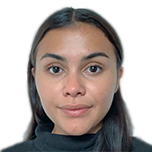Unemployment rises as over 50s head back to work
The latest figures from the Office for National Statistics showed a 0.1% increase in unemployment, but a decreased rate of inactivity.


Unemployment rose by 0.1% to 3.7% in the three months to October, according to the latest overview of the UK labour market from the Office for National Statistics. Rising unemployment can be a sign of a recession, which the UK is currently experiencing.
But it’s worth noting there was also an increase in people looking for employment, particularly among those aged 50 to 64.
That could be good news for the economy, and might have an impact on interest rates.
MoneyWeek
Subscribe to MoneyWeek today and get your first six magazine issues absolutely FREE

Sign up to Money Morning
Don't miss the latest investment and personal finances news, market analysis, plus money-saving tips with our free twice-daily newsletter
Don't miss the latest investment and personal finances news, market analysis, plus money-saving tips with our free twice-daily newsletter
Taking a look at the unemployment figures
The economic inactivity rate decreased 0.2% in the quarter, to 21.5%, as retirees went back to work in the face of rising energy costs and growing inflation, which is currently at a 41-year high of 11.1%.
“More people are leaving the inactive masses, clearly keen to earn extra money as the cost-of-living crisis intensifies but the overall rate remains stubbornly high,” says Susannah Streeter, senior investment and markets analyst at Hargreaves Lansdown.
The number of vacancies fell by 65,000 in September to November, the fifth consecutive quarterly fall. But at 1,187,000, the number of vacancies still remains at a historically high level.
Private sector wages increased by 6.9% from August to October 2022, which might also incentivise some to return to work. However, the public sector only saw growth of 2.7%. The gap is among the widest seen between the private and public sector.
When adjusted for inflation, pay fell by 2.7%. While it’s slightly lower than the record fall of 3% in the April to June period, it’s still among the biggest falls in growth since records began.
Why rising unemployment could be good news
Over the past two years, the UK economy has been hamstrung by a lack of workers with the number of job vacancies surpassing the number of jobseekers.
With companies fighting over workers, there’s also been upward pressure on wages, which has helped fuel inflation (that’s if businesses can even find workers in the first place).
While the number of workers in the economy has risen since the end of the pandemic, the percentage of people working has remained stubbornly below 2019’s figure.
The so-called economic inactivity rate refers to individuals who are not participating in the labour force, either by working or looking for work. This can happen for a variety of reasons, including retirement, illness, or staying at home to take care of children or other family members.
Economic inactivity can also occur when individuals are unable to find work, either due to a lack of available jobs or because they lack the skills or experience needed to secure employment.
Analysts reckon that as many as 200,000 workers have left the labour force due to healthcare concerns, primarily due to the effects of long-Covid, since 2019.
However, with an increasing number of those who’d previously left the workforce now looking to return, this could be good news for the UK economy.
Indeed, earlier this year the Recruitment and Employment Confederation said the UK’s labour shortages could cost the country as much as £30bn a year in lost economic output.
A shortage of workers in the economy has weighed on business activity over the last 12 months, but some workers now coming out of retirement these pressures might ease.
By Nicole García Mérida with additional contributions from Rupert Hargreaves.
Get the latest financial news, insights and expert analysis from our award-winning MoneyWeek team, to help you understand what really matters when it comes to your finances.
Nic studied for a BA in journalism at Cardiff University, and has an MA in magazine journalism from City University. She has previously worked for MoneyWeek.
-
 The shape of yields to come
The shape of yields to comeCentral banks are likely to buy up short-term bonds to keep debt costs down for governments
-
 The sad decline of investment clubs – and what comes next
The sad decline of investment clubs – and what comes nextOpinion Financial regulation and rising costs are killing off investment clubs that once used to be an enjoyable hobby, says David Prosser
-
 UK wages grow at a record pace
UK wages grow at a record paceThe latest UK wages data will add pressure on the BoE to push interest rates even higher.
-
 Trapped in a time of zombie government
Trapped in a time of zombie governmentIt’s not just companies that are eking out an existence, says Max King. The state is in the twilight zone too.
-
 America is in deep denial over debt
America is in deep denial over debtThe downgrade in America’s credit rating was much criticised by the US government, says Alex Rankine. But was it a long time coming?
-
 UK economy avoids stagnation with surprise growth
UK economy avoids stagnation with surprise growthGross domestic product increased by 0.2% in the second quarter and by 0.5% in June
-
 Bank of England raises interest rates to 5.25%
Bank of England raises interest rates to 5.25%The Bank has hiked rates from 5% to 5.25%, marking the 14th increase in a row. We explain what it means for savers and homeowners - and whether more rate rises are on the horizon
-
 UK inflation remains at 8.7% ‒ what it means for your money
UK inflation remains at 8.7% ‒ what it means for your moneyInflation was unmoved at 8.7% in the 12 months to May. What does this ‘sticky’ rate of inflation mean for your money?
-
 Would a food price cap actually work?
Would a food price cap actually work?Analysis The government is discussing plans to cap the prices of essentials. But could this intervention do more harm than good?
-
 Is my pay keeping up with inflation?
Is my pay keeping up with inflation?Analysis High inflation means take home pay is being eroded in real terms. An online calculator reveals the pay rise you need to match the rising cost of living - and how much worse off you are without it.
